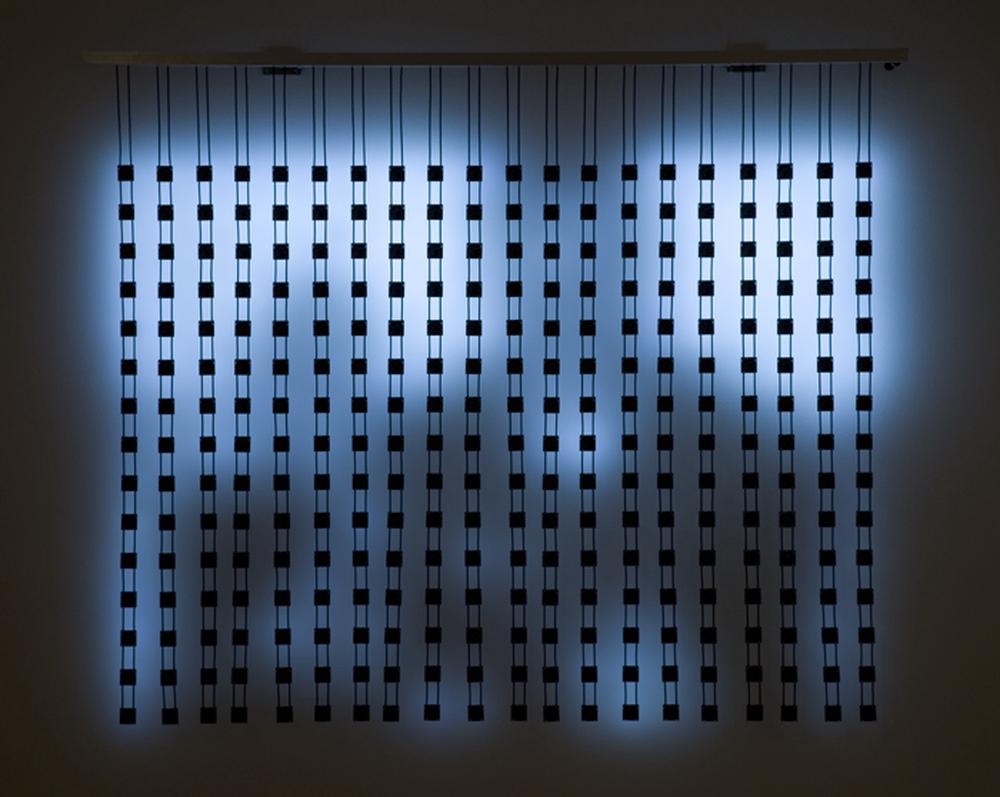Jim Campbell. A Curtain of Floating Pixels

Jim Campbell works at the edge of representation and abstraction to explore the nature of perception. “What is the difference,” the artist asked, “between what can be represented and what can be seen?”1 In the works he is best known for, Campbell digitally transfers material sources like photographs and films to computerized LED displays. Home Movies 300–3 (2006) is a curtain of floating pixels that projects an image backwards onto a wall, using the minimal number of picture elements (or pixels) possible to generate an image. “Very low-resolution images exist at the borderline of abstraction,” explained the artist.2 Anonymous home-movie footage—sourced from eBay—becomes a perceivable image when the light of one LED, or pixel, blurs with the light next to it, creating a smooth and soft reflection on the wall. Paradoxically, the wall filters the LED lights, making them individually less precise but collectively more representational; as Campbell described, “by taking information away, more meaning is communicated.”3
Jim Campbell, “The Beginning,” in Jim Campbell: Material Light, ed. Steve Dietz (Ostfildern, Germany: Hatje Cantz, 2010), 34. ↩︎
Jim Campbell, in Robert R. Riley, “The Memory Works,” in Jim Campbell: Material Light, ed. Steve Dietz (Ostfildern, Germany: Hatje Cantz, 2010), 70. ↩︎
Jim Campbell, in Robert R. Riley, “The Memory Works,” in Jim Campbell: Material Light, ed. Steve Dietz (Ostfildern, Germany: Hatje Cantz, 2010), 70. ↩︎